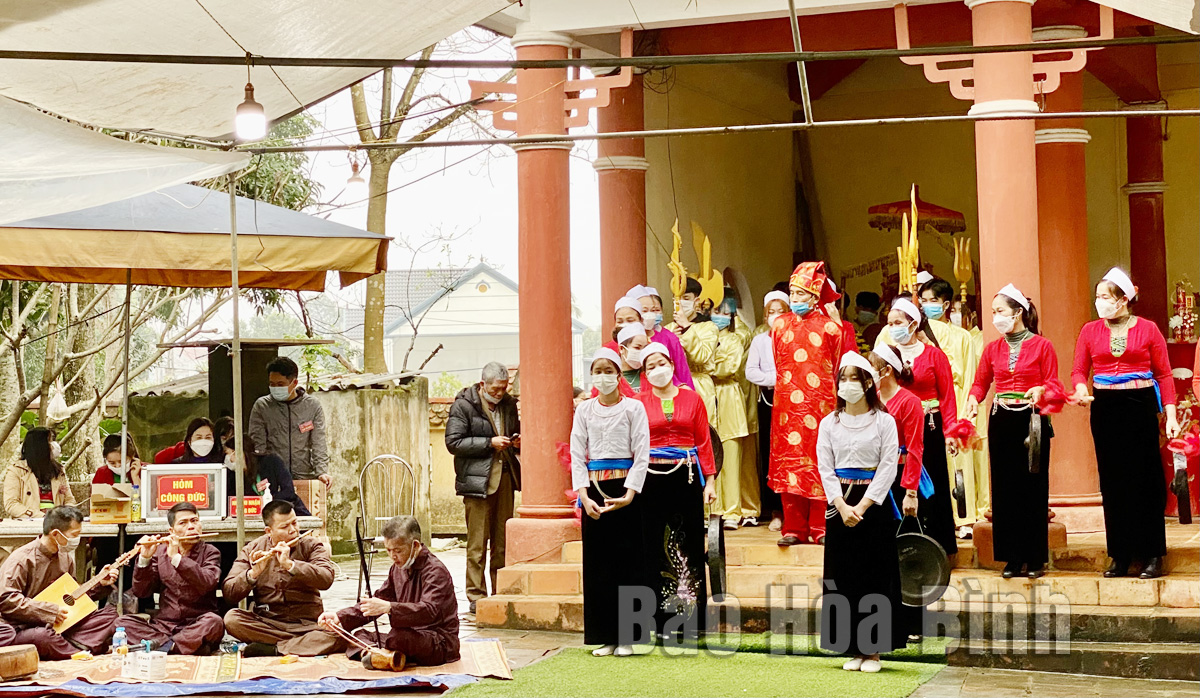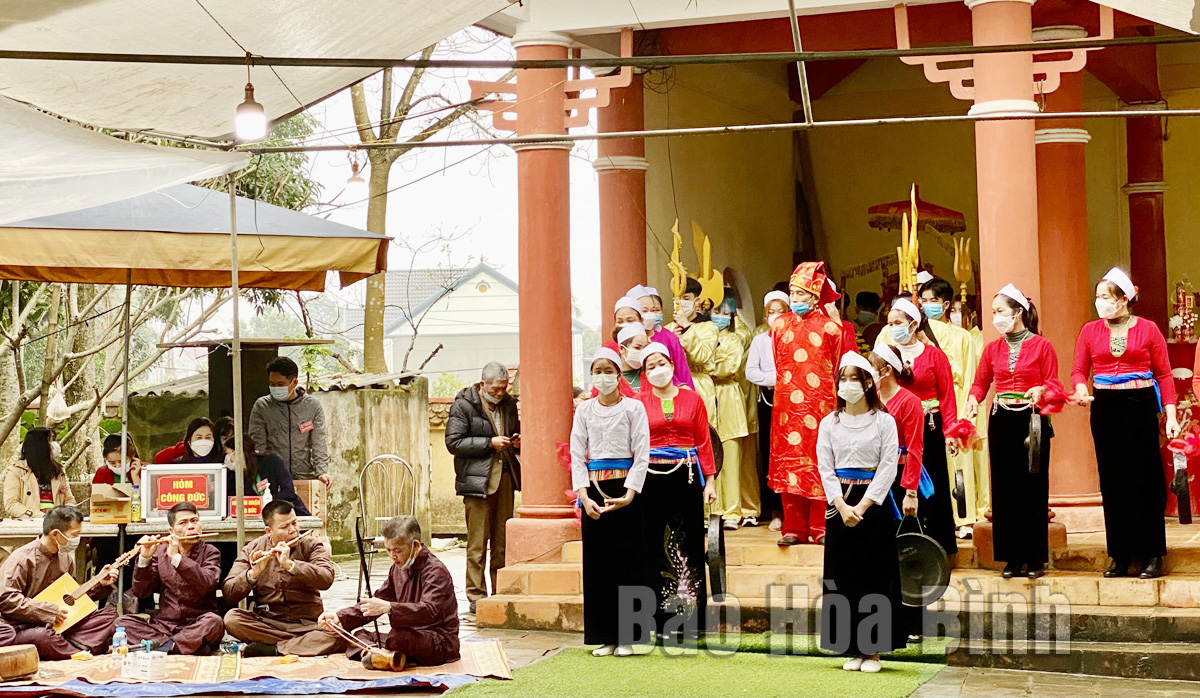
(HBO) - Tan Lac district is proud to be one of the cradles of the Muong ethnic people, which was previously known as Muong Bi. Over the past years, ethnic groups have raised their awareness of preserving and upholding cultural identity.
Muong ethnic musical instruments are indispensable cultural values
during Muong Bi (Tan Lac) summer festival.
Head of the district Culture-Information Office Dinh Son Tung said Muong Bi is
home to well-known relic sites such as Trang waterfall, Cot Co mountain in Nhan
My commune, Nam Son and Nui Kien caverns in Van Son commune, and Hoa Tien and
Thac Bo caverns and Bung cave in Suoi Hoa commune. Traditional craft products
like brocades and can (pipe) wine, together with folk songs and Muong gong
performances, have enriched local spiritual lives, contributing to popularising
the image of Muong land and its people.
Recent statistics showed that the district is now home to 87,565 people, 85
percent of them of the Muong ethnic group. Over 2,200 Muong gongs, 579 folk
musical instruments and about 4,800 Muong ethnic costumes are being kept. Among
the 11 recognised relic sites, six are at the national level and five at
the provincial one. The district checked the status of 60 relic sites and
classified them to add into the list of relics under the management of the
province.
Secretary of the district Party Committee Dinh Anh Tuan affirmed that
developing culture, preserving and upholding cultural identity are both
the goal and the driving force for socio-economic management and national
defence-security. In particular, in order to create highlights in local tourism
development, the district raised public awareness of the effort from the
grassroots level, especially in each family and residential area. It pooled
resources and focused investment in humans and outstanding cultural values,
with incentives given to collectors, researchers and keepers of the traditional
cultural identity. The district also combined the socio-economic development
with the preservation of ethnic cultural identity and enhanced State investment
in the effort, especially in remote and mountainous areas./.
With an increasingly vibrant and widespread emulation movement aimed at building cultured residential areas and cultured families, Yen Thuy District has been making steady progress toward improving both the material and spiritual well-being of its people, while fostering a civilized, prosperous, beautiful, and progressive community.
Once lacking recreational spaces and community facilities, Residential Group 2 in Quynh Lam Ward (Hoa Binh City) has recently received attention for the construction of a new, spacious, and fully equipped cultural house. The project followed the model of state support combined with public contributions in both labor and funding.
The "All people unite to build cultural life" movement, which has been effectively integrated with Kim Boi district’s socio-economic development goals, is fostering a lively spirit of emulation across local residential areas, hamlets, villages, public agencies, and enterprises. In addition, through the initiative, traditional cultural values are being preserved and promoted, while community solidarity and mutual support in poverty reduction and economic development are being strengthened.
A working delegation of the Hoa Binh provincial People’s Committee led by its Permanent Vice Chairman Nguyen Van Toan on June 11 inspected the progress of a project to build the Mo Muong Cultural Heritage Conservation Space linked to tourism services in Hop Phong commune, Cao Phong district.
Born and growing in the heroic land of Muong Dong, Dinh Thi Kieu Dung, a resident in Bo town of Kim Boi district, in her childhood was nurtured by the sweet lullabies of her grandmother and mother. These melodies deeply imprinted on her soul, becoming an inseparable part of her love for her ethnic group's culture. For over 20 years, this love for her hometown has driven Dung to research, collect, and pass down the cultural values of the Muong people to future generations.
In the final days of May, the Ethnic Art Troupe of Hoa Binh Province organized performances to serve the people in remote, mountainous, and particularly disadvantaged areas within the province. These were not just ordinary artistic shows, but they were the meaningful journeys aimed at spreading cultural values, enhancing the spiritual life of the people and contributing to the preservation of ethnic minority cultural identities.



